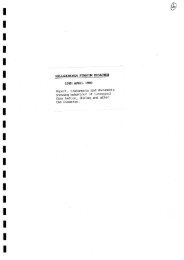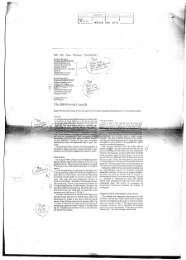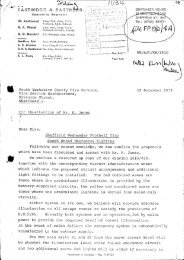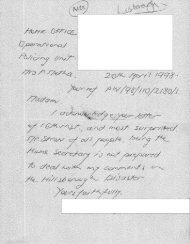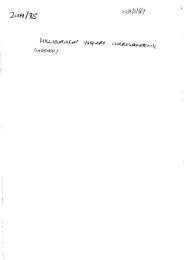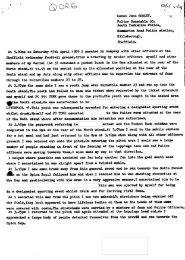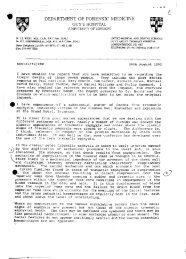Download the document (1.26 MB) - Hillsborough Independent Panel
Download the document (1.26 MB) - Hillsborough Independent Panel
Download the document (1.26 MB) - Hillsborough Independent Panel
You also want an ePaper? Increase the reach of your titles
YUMPU automatically turns print PDFs into web optimized ePapers that Google loves.
Lord Justice Taylor did find that "<strong>the</strong>re was insufficiently close co-operation<br />
between <strong>the</strong> police and <strong>the</strong> emergency services", and fur<strong>the</strong>r found that "it is<br />
clear that SYMAS and <strong>the</strong> Fire Brigade should have been called earlier than<br />
<strong>the</strong>y were". But, in view of his finding as to <strong>the</strong> "pa<strong>the</strong>tically short period for<br />
which those unable to brea<strong>the</strong> could survive" he found that it is "improbable<br />
that quicker recourse to <strong>the</strong> emergency services could have saved more lives".<br />
Moreover, he rejected <strong>the</strong> criticism that, once <strong>the</strong>y had been called, <strong>the</strong> St.<br />
John Ambulance Brigade, <strong>the</strong> Fire Brigade and SYMAS (<strong>the</strong> South Yorkshire<br />
Metropolitan Ambulance Service) had been slow to respond or inappropriate<br />
in <strong>the</strong>ir response or that <strong>the</strong>re was any insufficiency of equipment or lack of<br />
triage. However, it is clear that he did not rule out <strong>the</strong> possibility that some<br />
lives may have been saved by calling <strong>the</strong> emergency services in earlier and his<br />
conclusion that in most cases <strong>the</strong> injuries would have been fatal in any event<br />
after a very short period of crush asphyxia depended on a particular<br />
pathological premise (namely that fatal crush injuries were due to a<br />
continuing pressure which made death inevitable in a matter of minutes)<br />
which has subsequently been challenged and is inconsistent with <strong>the</strong> fact that<br />
some of <strong>the</strong> dead appeared to have revived briefly and many of <strong>the</strong> injured<br />
who got medical attention promptly did survive (See BMJ article dated 30th<br />
November 1991 and annexed hereto). As to his view that <strong>the</strong> emergency<br />
services could not be validly criticised, this was based on a rejection of <strong>the</strong><br />
evidence of two doctors present at <strong>the</strong> ground with which a jury (had <strong>the</strong>y<br />
been allowed to hear <strong>the</strong>ir evidence at <strong>the</strong> inquest) might not have concurred.




